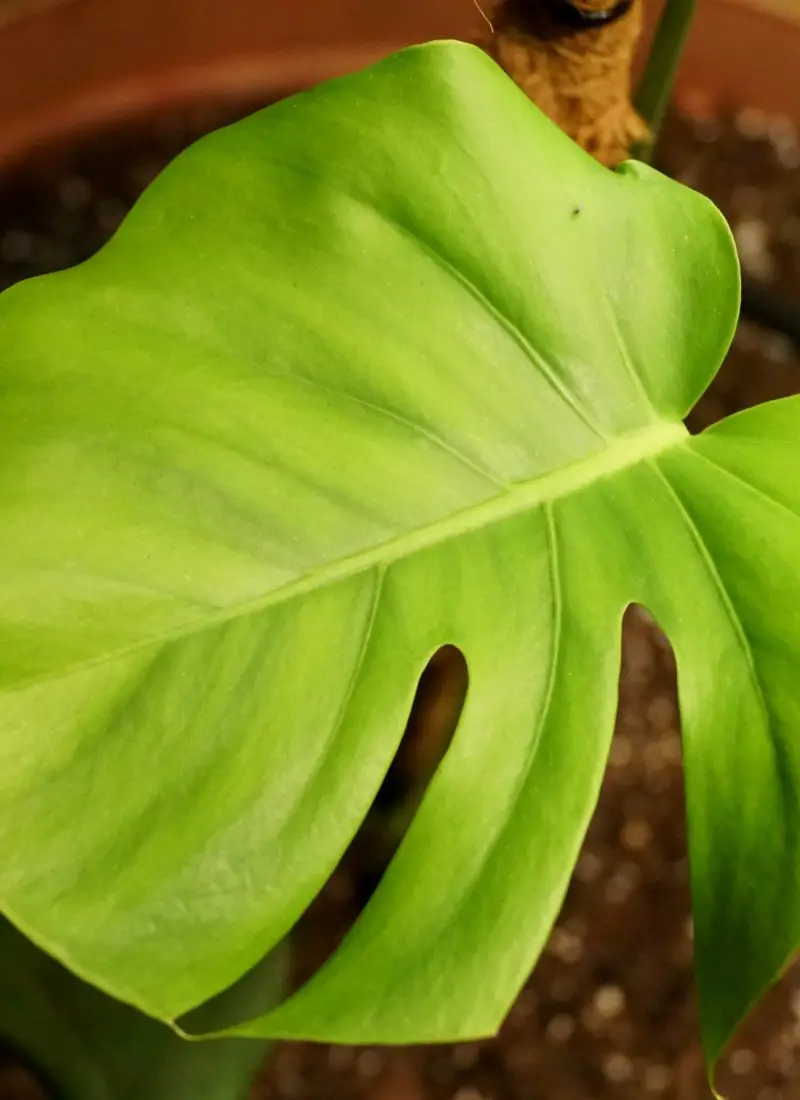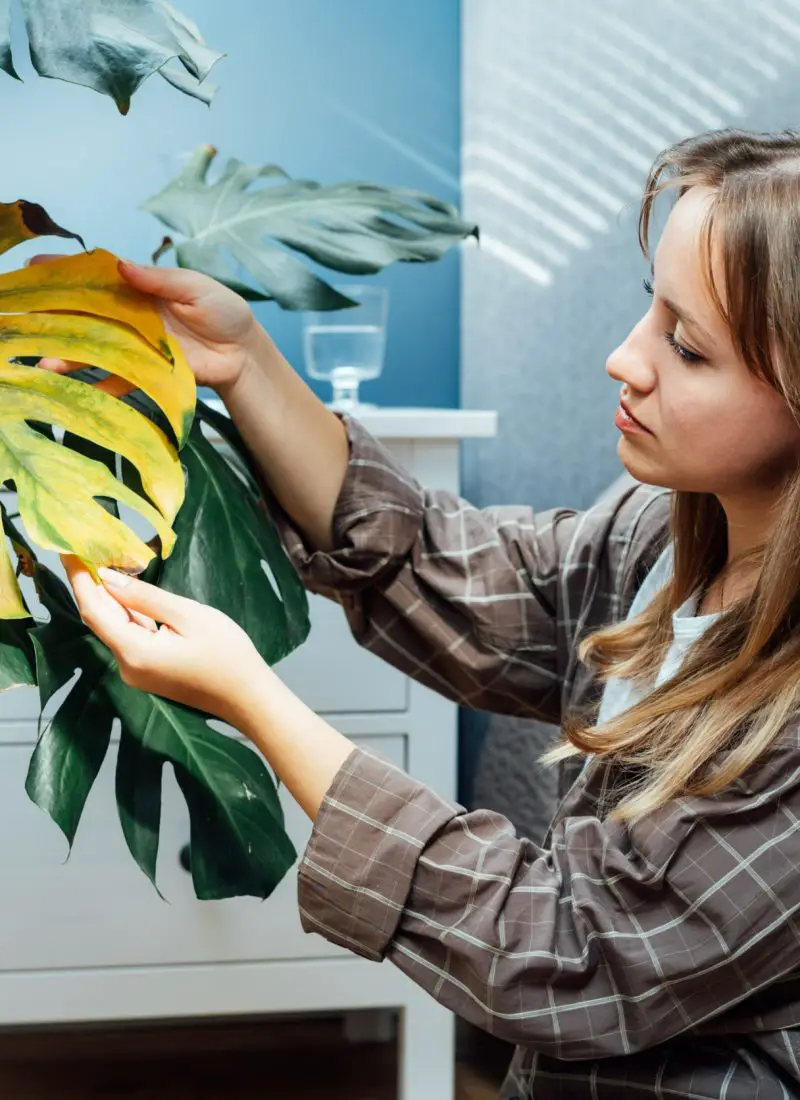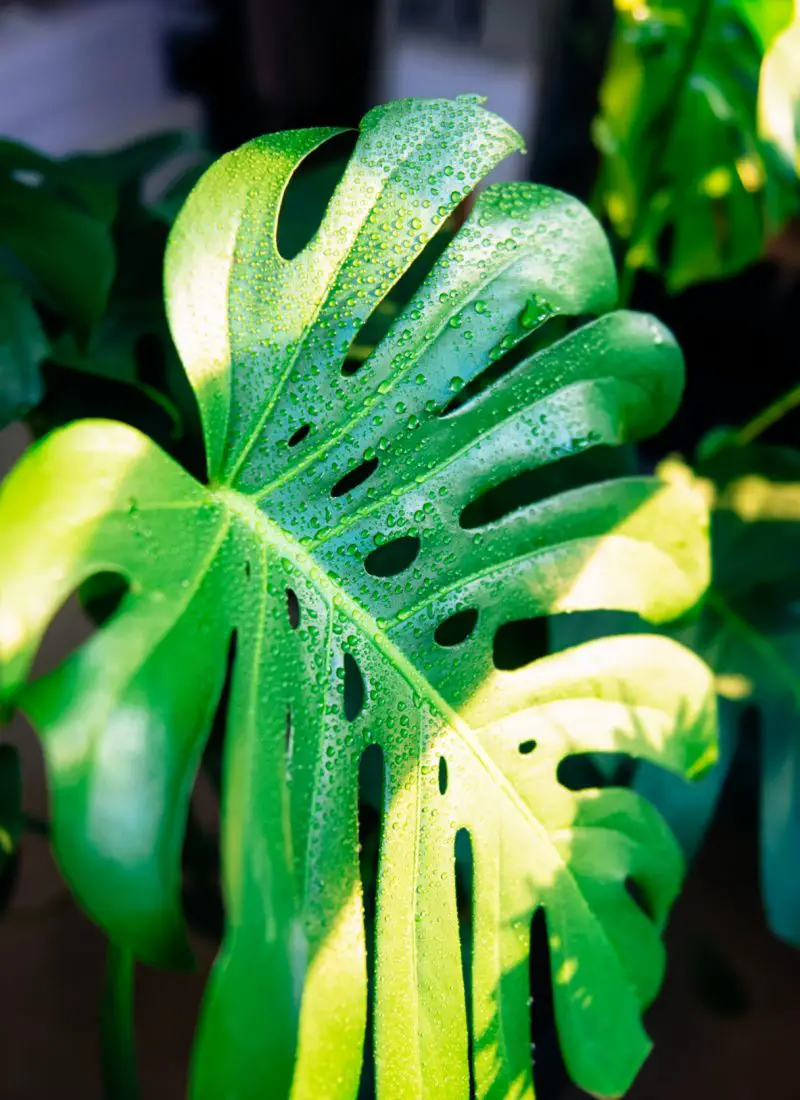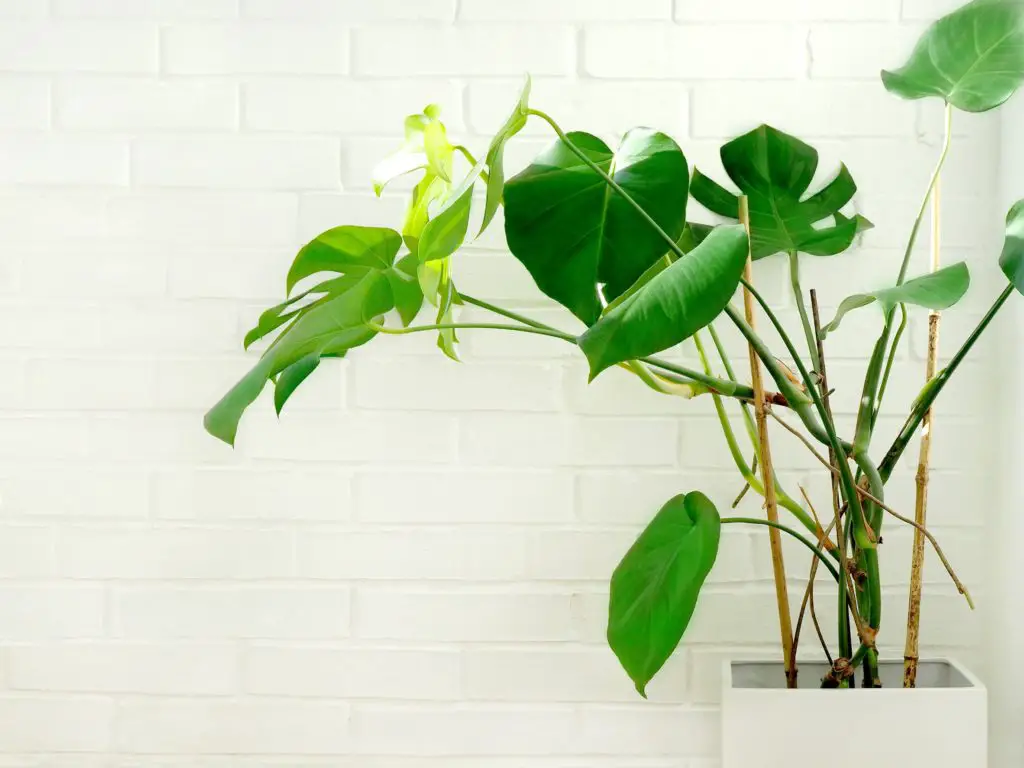
Mature Monsteras, as beautiful as they are, will become floppy and grow horizontally if they aren’t trained to climb up vertical supports. So how do you get them to do that?
Monsteras are climbing plants with aerial roots that will latch and wrap around a provided trellis, stake, or moss totem pole. Tying the vines against the support will encourage the plant to grow vertically. This also ensures it will develop larger leaves with prominent fenestrations.
Below, I discuss this further in detail, along with helpful tips. But first, a brief introduction …
(As an Amazon Associate, I earn from qualifying purchases.)
Table of contents
Why Do Monsteras Like to Climb?
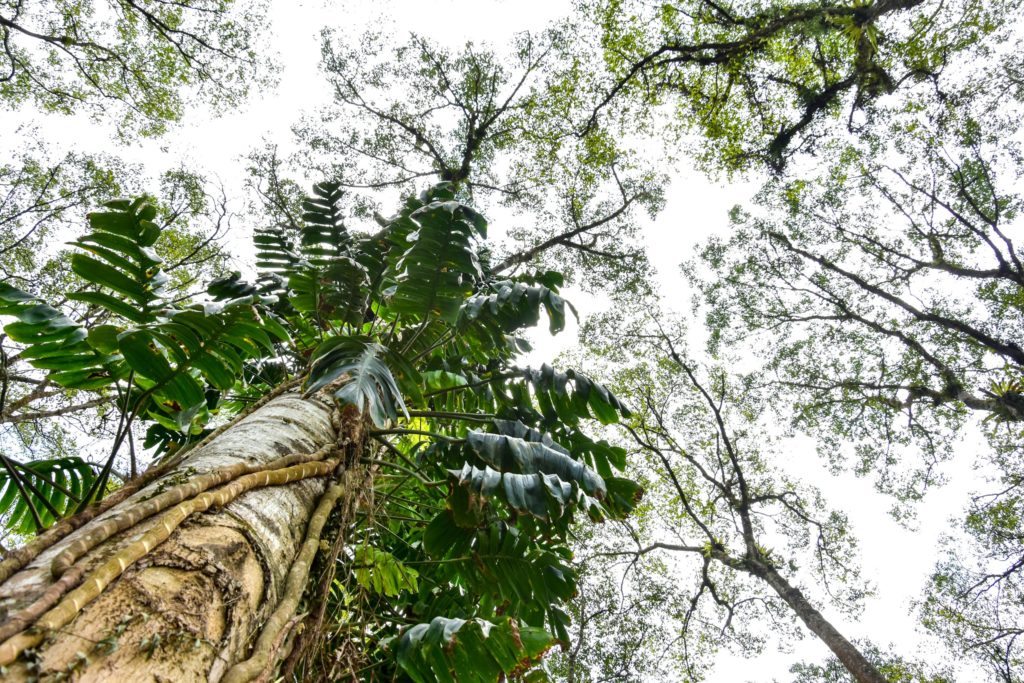
Monsteras are classified as climbing plants that depend on a host for support. This contributes to their growth and survival in the wild because it helps them receive more sunlight at higher heights while being rooted to the ground. It’s worth noting that Monsteras don’t leach nutrients off their host plant as they simply use them as vertical support.
They’ll start off looking like philodendrons with no splits in their leaves. But as they climb up and mature, the foliage starts developing fenestrations or splits that they are commonly known for. It’s another trait that allows wind to flow through the leaves without breaking them.
As indoor plants, they are preferred as compact plants, especially if you don’t have the space for a giant Monstera plant growing to the top of your ceilings. When left to grow on their own devices, they’ll start growing horizontally. This is because they are searching for a tall structure to hold and climb onto. When this happens, you can always prune and propagate them. But for those who want to see them flourish in all their towering glory, there is a way to train them to grow upwards.
How Can I Train My Monstera Plant to Climb and Grow Vertically?
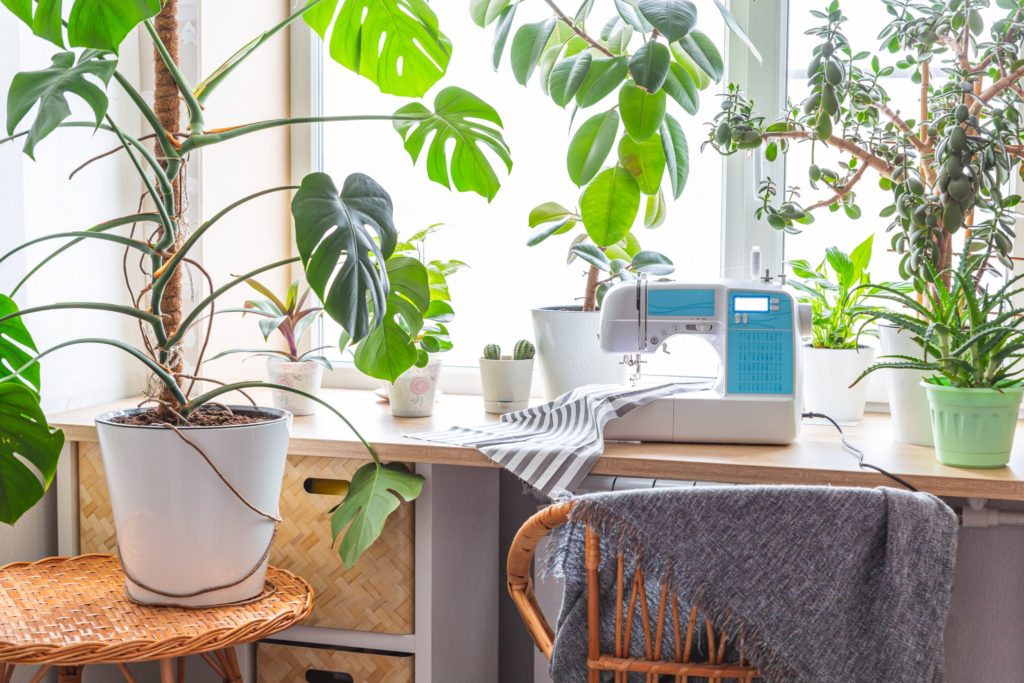
Training your Monstera is reasonably straightforward, but it does take patience before your plant starts climbing up. Here’s how you can get started:
- Select sturdy supports like a moss totem pole or thick bamboo stakes. You can easily find these at gardening stores or online like this one from Amazon. You can also create your own at home with a wooden post, wires, and a handful of sphagnum moss. Depending on the current size of your Monstera plant, the length should be about twice as tall as the main stem. Some poles are stackable, which helps in adding more height without taking the whole thing off as the plant grows. But otherwise, you can start with a small pole/stake, then swap it out with a longer one as the plant develops.
- Insert the pole or stake into the side of the pot. The best time to do this is during the repotting process or early on when the plant is first potted. This way, you can secure the pole/stake in the soil without accidentally damaging the roots. Setting it to the side instead of the middle is also advisable for added support so it can lean against the container. Alternatively, you can double-pot and secure the pole/stake between the pots. This can be a quick fix if you’re not planning on repotting your Monstera just yet.
- Use garden zip ties or velcro to secure the Monstera against the pole/stake. This is where the training begins because your plant will not immediately clasp onto the vertical support like it’s drowning. It’s going to be a gradual development. You’ll have to constantly coax the aerial roots to wrap around the poles/stakes every now and then. Eventually, your Monstera will start climbing. Ensure the ties/velcro are loose enough that the stem can still grow but tight enough that the plant won’t be able to slide down. You can also use string or twine to tie the plant in place.
Helpful Tips for Training My Monstera Plant to Climb
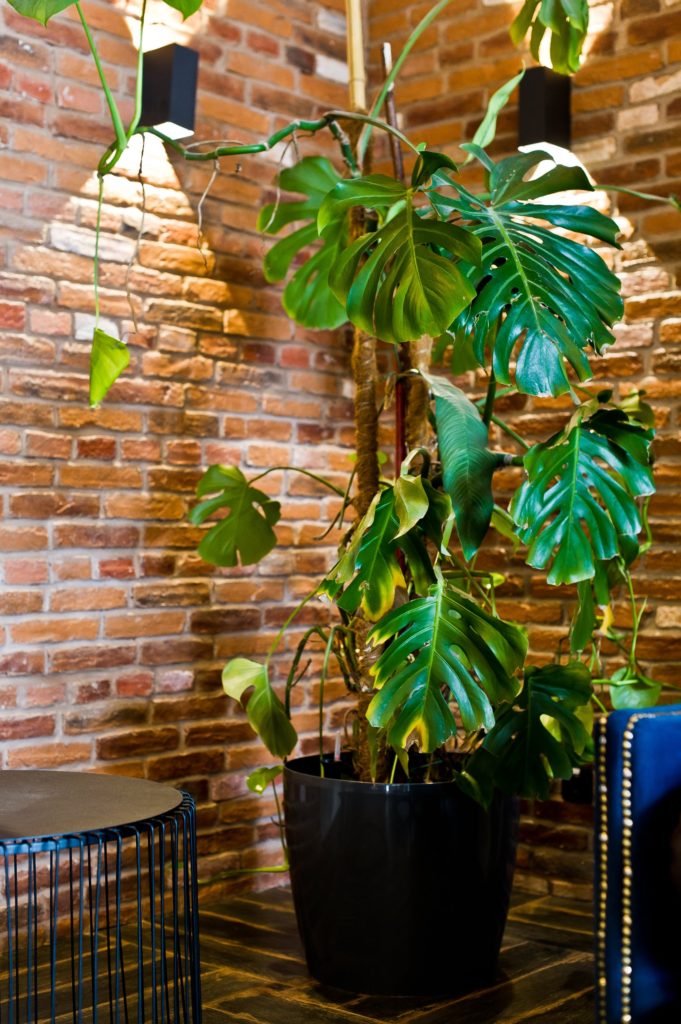
So now you know how to train your Monstera plant. Here are some valuable tips for you to keep in mind:
- Secure the pole/stake with chopsticks or dowels. Over time, the potting mix will settle, making the vertical support wobbly. Placing these items horizontally from the sides of the pot to the pole/stake will keep it upright and in place.
- Prune lopsided or horizontal growing vines. Sometimes, your Monstera can go rogue and decide it’s too good for the pole/stake you’ve provided. In this instance, it’s better to prune them off and propagate them in their own containers. If you forcefully tie them to the vertical support, you may damage the vines instead. So embrace their rebellion and give them their independence.
- Mist the moss/coir totem pole to keep it moist. Because the aerial roots will likely wrap around this support, it’ll benefit from a spritz of water now and then. If you’re thinking about misting your Monstera plant, think again. This article on how misting impacts a Monstera’s growth will tell you more about it.
- Give the Monstera the best care you can give. You want to ensure the plant has everything it needs to grow well. This includes providing them indirect sunlight, weekly to biweekly watering, and monthly fertilizers during the growing season. They’ll also benefit from being in a warm room with relatively high humidity of 50-60%, far away from cold drafts and temperatures below 50ºF. It’s also advisable to repot them every 2 years to give their roots more room to grow. Suppose you’re wondering about the best pot to plant them in. In that case, this article on Monsteras in terracotta pots may give you some helpful insights.
Frequently Asked Questions about Training a Monstera Plant to Climb

Use garden zip ties, velcro, twine, fishing lines, or wires to secure a Monstera plant against a trellis. The added attachment will help train the plant to grow against the provided vertical support. Otherwise, your plant will develop horizontally, which is not a problem for their growth but may not be the best look.
Monsteras don’t necessarily require a moss pole to grow but will benefit from one. It encourages better development, leading to bigger leaves. The plant will grow sideways if you don’t provide vertical support. This is because they are natural climbers who gravitate towards something to climb on. So be careful it doesn’t start mounting and attaching itself onto your bookcase.
Pruning a Monstera plant is best if it’s gotten too big. These cuttings can be propagated to make more of the plant. In indoor settings, keeping this plant compact is more beneficial for easier maintenance. So don’t be afraid to get your gardening scissors out and snip some of the foliage off.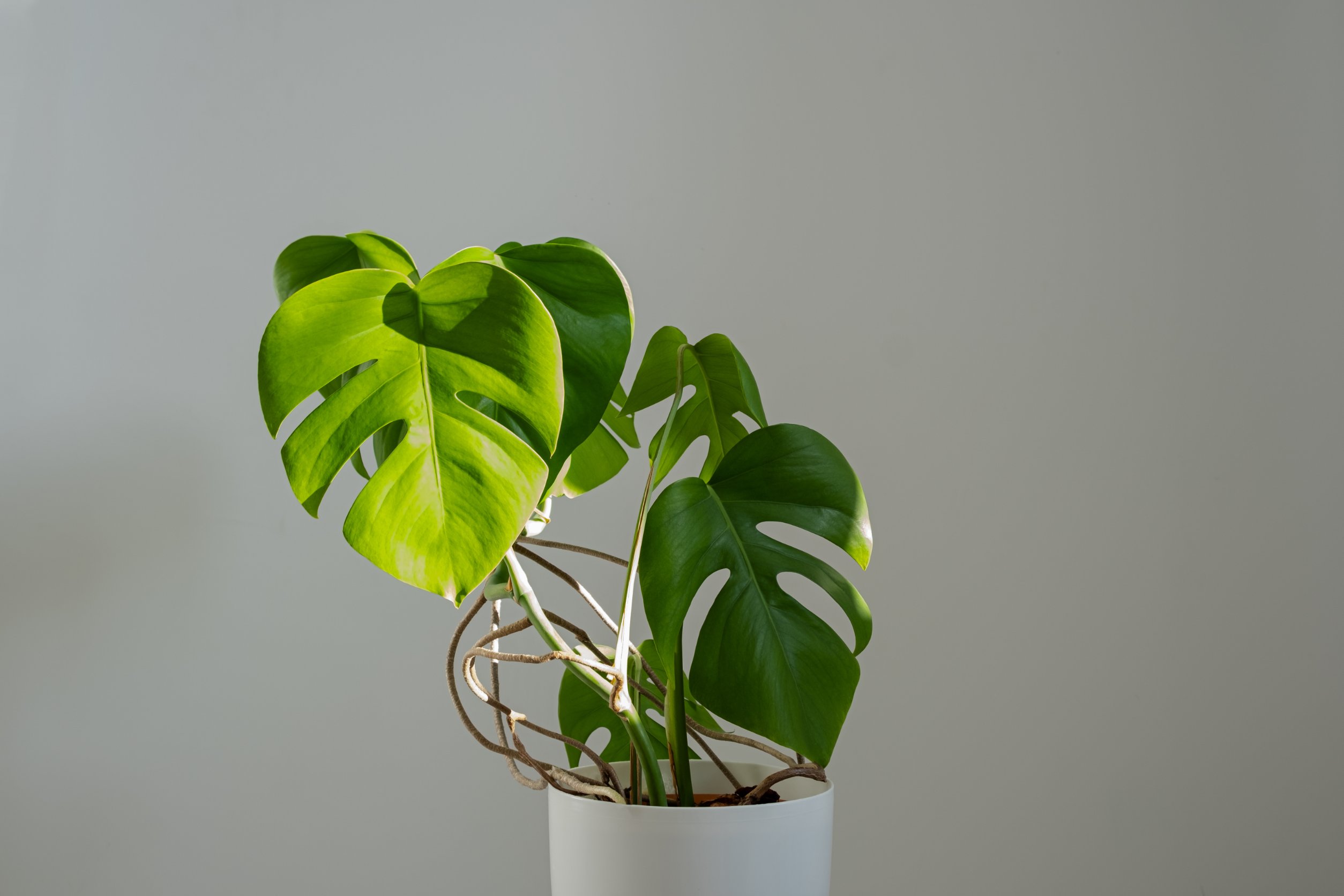
Without vertical support, Monsteras can become top-heavy and flop over as they grow. This is why placing a pole/stake from the start or during the repotting process helps encourage the Monstera to grow vertically.
Plain bamboo stakes, a metal trellis, and a wooden slat are great options as vertical supports for Monsteras instead of a moss pole. The material or type doesn’t necessarily matter, as long as the plant has something to climb onto. You can even easily make your own moss pole by wrapping sphagnum moss around a thick rod and securing it with wires.
Wrapping a Monstera’s aerial roots around vertical support encourages the plant to climb. They can also be rooted in the soil to carry more nutrients all over the plant. You can also remove them if they’re too much of a hassle. Don’t worry; this won’t affect the plant’s health because your Monstera will often grow more than you need.
Final Words
Overall, it’s pretty easy to train your Monstera to climb a provided support. With just a little bit of effort and persistence, your plant will be waving its split leaves down at you in no time. Happy planting!
References:
- Monstera deliciosa – Plant Finder. (n.d.). Www.missouribotanicalgarden.org. https://www.missouribotanicalgarden.org/PlantFinder/PlantFinderDetails.aspx?kempercode=b605
- Split-leaf philodendron, Monstera deliciosa. (n.d.). Wisconsin Horticulture. https://hort.extension.wisc.edu/articles/split-leaf-philodendron-monstera-deliciosa/
- HS1071/HS311: Monstera Growing in the Florida Home Landscape. (n.d.). Edis.ifas.ufl.edu. Retrieved August 30, 2022, from https://edis.ifas.ufl.edu/publication/HS311


